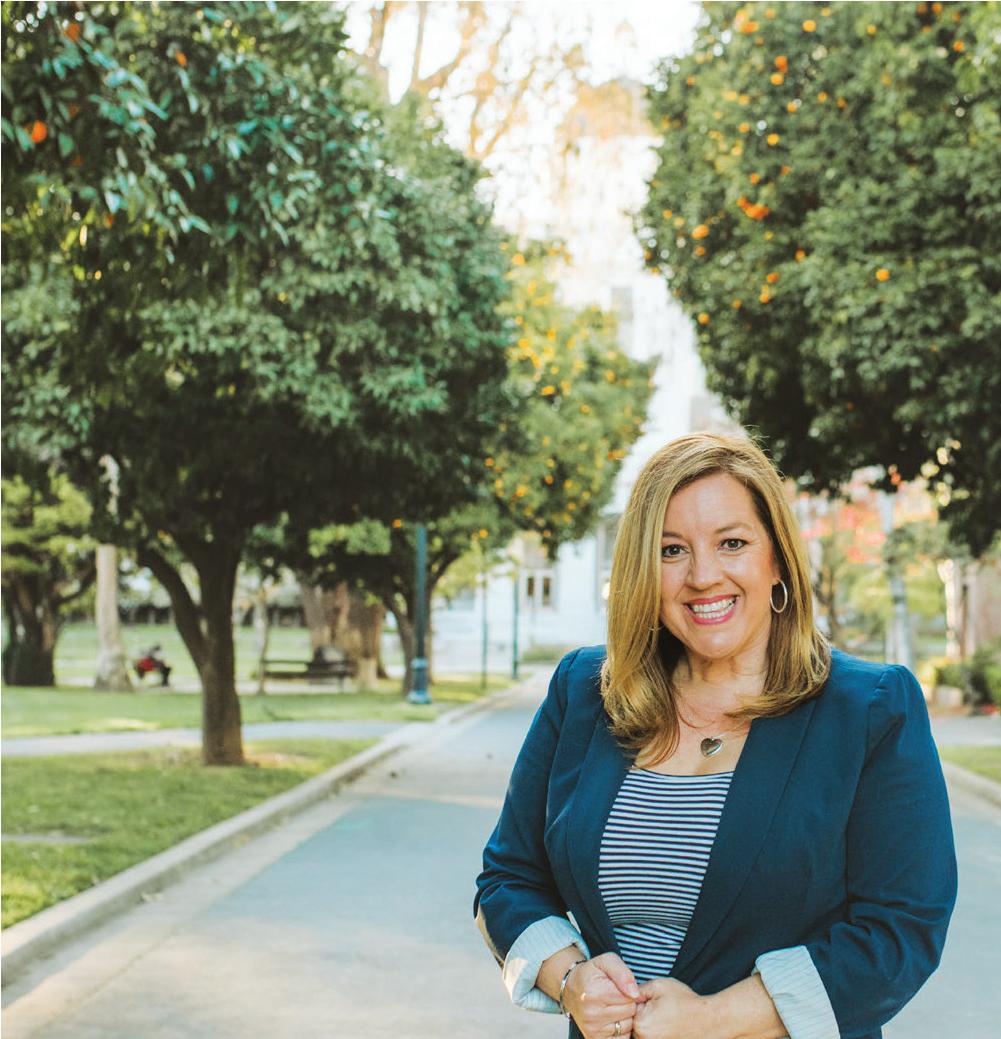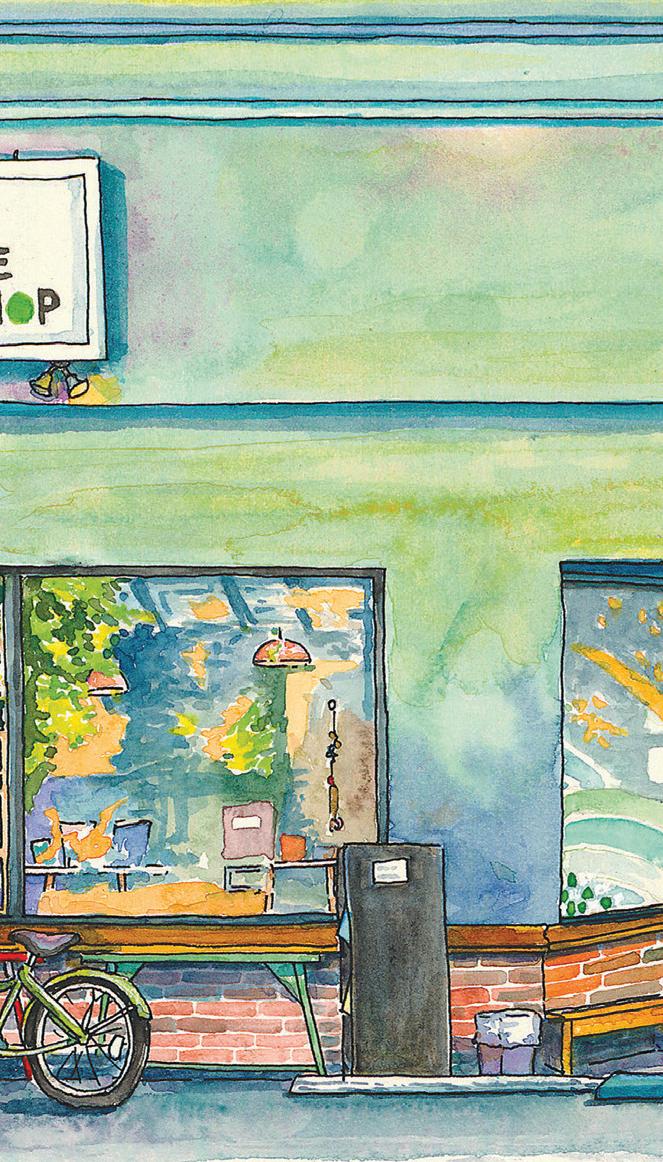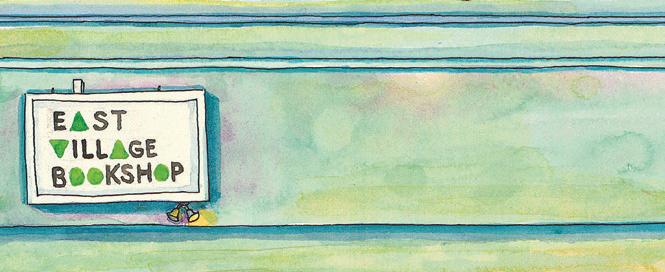
4 minute read
Garden Jabber
Beat The Climate
UPDATED PRACTICES AND BASIC PRINCIPLES TAKE GARDENS FORWARD
Challenging weather patterns amplifi ed the wailing and woes heard during my UC Master Gardener stints at the California State Fair and Harvest Day at the Fair Oaks Horticulture Center.
Ailing perennials, struggling annuals, disappointing veggie yields and low morale affected many Sacramento gardeners this summer.
Among the most common lament was, “What’s wrong with my tomatoes?”
I can relate. This was the fi rst year my annual planting of the heirloom tomato Cherokee Purple didn’t produce a single tomato. Each morning, I inspected the plant with hopes of discovering a tiny green orb.
Nope. Heat and blossom drop ensured a shutout. Concerned about water waste during a period of extreme drought, I dug it up in early August.
On the fl ip side, hybrid tomatoes produced an abundant crop, which is why I now mix fussy heirlooms with reliable hybrid varieties.
Garden writer Lee Reich once wrote, “My gardening is something like my writing. I do a draft and then edit it again and again.” Repeated editing is especially necessary in the Sacramento region because of changing and sometimes extreme growing conditions.
Updating practices and tweaking outdated thinking are steps forward, followed by reminders of a few valuable guidelines we may have forgotten or ignored. Not much room for error these days.
Beating the climate continues to rely on basic principles: adequate sunlight, healthy soil, a water source and the right plants for the location. Choosing plants that have the best chance to fl ourish is an invaluable guideline. Plants are expensive. Nobody rejoices when one dies.
Nurseries mostly sell plants suited to Sacramento’s growing zone, which the USDA deems Zone 9b. Inspect the back of the plant label to fi nd the recommended zone.
Zones are determined by the average extreme low temperature. In Sacramento that would be 25–30 degrees. Gardens have unique microclimates that can raise or lower temperatures. Some Joe Bag-of-Seeds in my neighborhood may have plucked two dozen Cherokee Purple tomatoes. Slightly different growing conditions in the same neighborhood can result in varying results.
One garden receives an abundance of shade. Another next door is aglow with all-day full sun. Last month, a reader lamented the sudden loss of shade and privacy when her neighbor removed trees along the property line. Same thing happened to me last year. What had been a late-afternoon shady area, became an oven on broil. Time to edit.
Before purchasing a plant, research how many hours of sunlight it requires. Poor citrus yields can be caused by not enough sunlight. Scorched Japanese maple leaves indicates too much direct sunlight. Like real estate, reducing plant problems depends on location, location, location.
Not all nursery plant labels include important information like growing zone, light requirements, width, height, and water and soil needs, especially if the nursery grows its own or buys from local growers. If detailed label information is absent, search for larger signage on the display table or ask when buying.
For Sacramento-specifi c perennials, shrubs and trees, visit the watereffi cient gardens at the Fair Oaks Horticulture Center in Fair Oaks Park. The gardens are open daily, dawn to dusk. The demonstration gardens are open until Oct. 12 from 9 a.m. to noon. Admission is free.
DV DV
By Dan Vierria Garden Jabber
Thank You for Re-electing Brian Holloway
to the American River Flood Control District
Director, Sacramento Area Flood Control Agency Board Past President, East Sac Chamber of Commerce East Sacramento Community Assn. Board Endorsed by Cecily Hastings, Inside Sacramento
ID# 1227814-2014 Paid for by Brian Holloway for American River Flood Control District Trustee 2022


If you go online, seek reliable sites with addresses that end in .edu or .gov. The Sacramento County Master Gardener website—sacmg.ucanr. edu—has plant information focused on Sacramento. “The New Sunset Western Garden Book” also is a valuable resource.
Finally, when chatting with local gardeners at events, many admitted they did not use mulches. That nomulch story requires immediate editing. Mulches, spread atop the soil, are a necessity for happy plants. Use wood chips, bark chips, shredded leaves or straw to help retain soil moisture, add organic material to the soil and deter weeds.
Did your summer gardening story have a happy ending? I hope so.
Dan Vierria is a University of California Cooperative Extension Master Gardener for Sacramento County. He can be reached at masterg29@ gmail.com. For answers to gardening questions, contact the UCCE Master Gardeners at (916) 876-5338, email mgsacramento@ucanr.edu or visit sacmg.ucanr.edu. Previous columns can be found and shared at InsideSacramento.com. Follow us on Facebook, Twitter and Instagram: @ insidesacramento. n


Send a Problem Solver to the State Senate.
Endorsed by CA Professional Firefighters, Senator Dr. Richard Pan, small business owners, and community leaders throughout Sacramento County.
ON THE CORNER OF MCKINLEY BLVD & 36TH ST
NEW & USED BOOKS FLOWERS POPSICLES FREE COFFEE & TEA



ANGELIQUE Ashby.
STATE SENATE
Learn more at AshbyForSenate.com
Paid Political Advertisement Paid for by Angelique Ashby for Senate 2022 ID# 1425662










